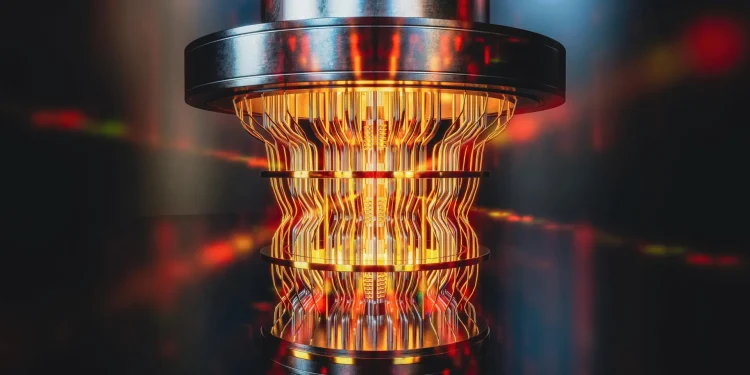Can you prove whether a large quantum system really behaves according to the weird and wonderful rules of quantum mechanics – or whether it just seems like it? In a groundbreaking study, physicists from Leiden, Beijing and Hangzhou have found the answer to this question.
You could call it a “quantum lie detector”: the Bell test designed by the famous physicist John Bell. This test shows whether a machine, such as a quantum computer, really uses quantum effects or simply imitates them.
As quantum technologies become more mature, even more stringent quantumness testing becomes necessary. In this new study, researchers took things to the next level, testing bell correlations in systems with up to 73 qubits – the building blocks of a quantum computer.
The study involved a global team: theoretical physicists Jordi Tura, Patrick Emonts, doctoral student Mengyao Hu from Leiden University, as well as colleagues from Tsinghua University (Beijing) and experimental physicists from Zhejiang University (Hangzhou).
The world of quantum physics
Quantum mechanics is the science that explains how the smallest particles in the universe – like atoms and electrons – behave. It’s a world full of strange and counterintuitive ideas.
One of them is quantum nonlocality, where particles appear to affect each other instantly, even when far away. Although it sounds strange, it is a real effect, and it won the Nobel Prize in Physics in 2022. This research is focused on proving the occurrence of nonlocal correlation, also called Bell correlations.
Smart experimentation
It was an extremely ambitious plan, but the team’s well-optimized strategy made all the difference. Instead of trying to directly measure complex bell correlations, they focused on something quantum devices are already good at: minimizing energy.
And it paid off. The team created a special quantum state using 73 Qubits in a superconducting quantum processor and measured energies far below what would be possible in a classical system. The difference was striking – 48 standard deviations – making it almost impossible for the result to be due to chance.
But the team didn’t stop there. They went on to certify a rare and more demanding type of nonlocality – known as true multi-party bell correlations. In this type of quantum correlation, all qubits in the system must be involved, making it much harder to generate – and even harder to verify. Remarkably, the researchers managed to prepare a whole series of low-energy states that passed this test down to 24 qubits, effectively confirming these special correlations.
This result shows that quantum computers aren’t just getting bigger – they’re also getting better at displaying and proving truly quantum behavior.
Why it matters
This study proves that it is possible to certify deep quantum behavior in large, complex systems – something never done on this scale before. This is a big step toward ensuring that quantum computers are truly quantum.
These ideas are more than theoretical. Understanding and controlling bell correlations could improve quantum communication, make cryptography more secure, and help develop new quantum algorithms.









